SOFTWARE: GENERAL INFORMATION ON
MASKS, SNORKELS & FINS
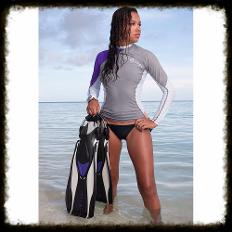
SNORKELLING TIPS
- Buy decent snorkelling gear for everybody, even the kids.
- Kids and adults alike will give up if the experience is made unpleasant by cheap equipment.
- Keep hair out of the mask. It'll cause a leak.
- A well-fitted mask should "stick" to your face without the strap.
- Take the family to a pool to practice before you go into the sea.
- Make sure everybody slips, slops and slaps.
- Drink plenty of water.
- Snorkel in the morning when the sea is usually at its calmest.
- Bring extra food: snorkeling makes everybody hungry.
- Use a bright beach towel to mark the entry spot on the beach.
- Always stay together.
- An inflated inner tube tied to Dad can act as a rest spot for the entire family.
- For your first family snorkeling adventure, invest in a disposable underwater camera. The photos will be hilarious.

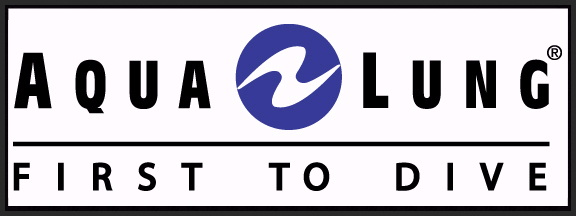



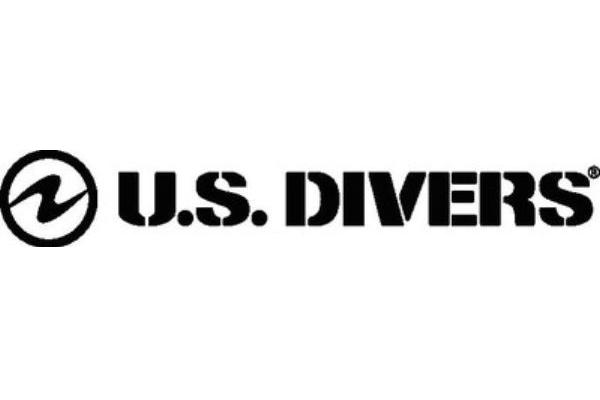




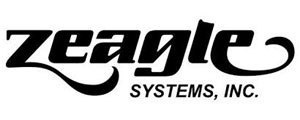

MASKS
Although it is perhaps one of the most simple pieces of diving and snorkelling equipment it is easy to realise the masks' importance. Without a quality mask that provides optimum visibility and comfort it is almost impossible to enjoy the underwater experience to its fullest.
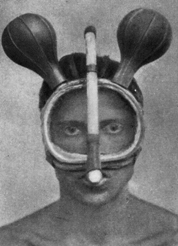
What to Look for in a Mask
When selecting a mask for yourself the most important things are fit, comfort and easy adjustment. A mask has a good fit when it seats comfortably on the face, seals well and does not leak.
All quality scuba masks have a silicone skirt, the softer and more comfortable the better. Do not confuse softness with thinness of the skirt material. The best masks have a thicker, more durable skirt while maintaining comfort. Once the style has been established fitting the mask is the most crucial part.
AN EXPLANATION OF MASK FEATURES
MASK FRAMES
Single
Some people prefer a single lens because they believe the bar on two lens masks across the bridge of the nose will be distracting.
This is generally not a problem because unless you deliberately try to look inwards you will not see it. Once you forget the bridge is there you will not notice it. The true benefit of a single lens mask is that they tend to be higher volume, which suits people with larger noses or a protruding forehead.
Double
Double lens masks are generally able to fit closer to the eyes, which allows greater visibility. The two lens mask has a low internal volume which requires little effort to clear.
Side Windows
The side windows on a mask provide enhanced side vision. A mask with side windows does have a larger internal volume, which will require slightly more effort to clear.
MASK SKIRTS
Silicon - Black or Clear Silicon is the best material for a mask skirt. It is very soft compared to other materials making for a better fit and greater comfort. Silicon holds its shape very well and is extremely durable. Black silicon is the product of choice for some snorkelers/divers although clear silicon is more popular. They are generally the same quality. Black silicon lets in less light, which some people find less distracting and is more popular with spear fishermen. Some people prefer the more open feeling and the cosmetics of clear silicon. Clear masks also have a wider range of colour choices for the mask frames.
Rubber - Rubber is rarely used in modern masks as other materials listed below offer either lower costs or greater comfort and durability.
PVC - PVC is a very inexpensive plastic material that is generally used on very inexpensive masks. It tends to be relatively hard and uncomfortable against the face and can lose shape quickly.
NEED OPTICAL LENSES FITTED?
There are many styles for those divers or snorkelers who also require special optical lenses fitted.
MASK CARE AND MAINTENANCE
The following Care and Maintenance information is provided for products that do not have a specific owner's manual and is intended as a general guide for basic care and maintenance of your Scuba Equipment.
Care Before the Dive: During the manufacturing process, a thin film of silicone will develop on the glass lens. This film of silicone will cause rapid fogging that is resistant to conventional anti-fog measures. It is important to remove this film of silicone from the lens prior to your first dive. To remove the film you will need to scrub the lens inside and out with a mild abrasive.
A paste toothpaste is ideal but a liquid scrub will also work. Rub the cleanser into the lens with your fingers several times and then rinse clean thoroughly. Mask fogging is a normal occurrence, even after the film of silicone has been removed. Normal fogging can be easily prevented with aftermarket anti-fog agents or saliva. Rub onto the lens and then rinse. Your dive will now be fog free!
Some after after-market anti-fog agents contain formaldehyde, alcohol, or other substances that may damage the plastic materials used in your mask. If unsure, avoid prolonged exposure of the anti-fog agent with the plastic parts of your mask.
Care During the Dive: When entering the water either from a boat or a beach, place a hand over the lens of your dive mask and hold it securely in place. This will help ensure your mask stays in place during entry and will help deflect any direct impact of water on the lens caused by the jump into the water or any approaching waves.
A typical dive staging area is a dangerous place for dive masks. Care should be taken to not leave your mask in a location where it might be exposed to dropping weight belts or tanks. It is best to avoid putting your mask on your forehead at any time during the dive. Several factors can cause the mask on your forehead to be dislodged and subsequently lost. If you want to temporarily remove the mask from your face, place the mask around your neck.
Care After the Dive: Soak in warm fresh water (not over 45C) to dissolve salt crystals. Rinse thoroughly with fresh water and towel dry before final storage.
Storage: Store in a cool, dry and protected place out of direct sunlight. Store separated from other dive gear as the black pigmentation of other equipment may discolor the clear silicone skirt of your mask.
Chemicals/Solvents: Avoid any contact with alcohol, oil, gasoline, aerosols, or chemical solvents. Do not expose any part to aerosol spray, as some aerosol propellants attack or degrade rubber and plastic materials.Do not use any type of alcohol, solvent or petroleum based substances to clean or lubricate any part. Do not store your equipment near any oil, gasoline, chemicals, or solvents.
SNORKELS
The snorkel is another relatively simple piece of equipment that offers the convenience and relaxation of breathing at the surface indefinitely, without needing to lift your head out of the water.
This allows you to view the underwater world uninterrupted. It is also considered a standard piece of equipment for scuba diving, since it allows you to conserve the air in your tank while
swimming on the surface.
SELECTING YOUR SNORKEL
Snorkels are made from a combination of materials, usually the upper bore is made from a rigid or semi rigid plastic while the lower portion or mouthpiece is made from silitex or silicon.
Bore - Contouring the snorkel to the head is a common feature of better snorkels. The larger the snorkel diameter the easier the breathing, but the greater the difficulty in clearing it of water. A small bore will restrict the flow of air but is easier to clear, this style is more suited to children. The larger bore is more suited to adults.
Mouthpiece - As with masks, the mouthpieces on snorkels come in a variety of sizes and material. The material varies from Silitex to Silicon. The silitex is a little hard on the mouth after extended use, whereas the silicon is much more comfortable and favoured by people spending extended periods in the water.
Length - The length of a snorkel should not exceed about 43cm, any longer than this and it becomes more difficult to clear, and if too short it will allow water to continually enter.
Purge Valve - The purge valve is found at the bottom of the snorkel and is designed to allow the snorkel to self-drain to reduce the effort in clearing.
Snorkel Keeper - Snorkel keepers are used to attach the snorkel to the mask strap, they are normally a soft loop style that slides over the snorkel or a clip-on plastic keeper. The keepers are supplied with the snorkel.
Dry Top - The dry top on a snorkel is designed to restrict the entry of water through the top of the snorkel without reducing the flow of air.
FINS
It is the invention of the fin that has allowed us to dive deeper to explore the world beneath the surface with grace and speed. The selection of a fin begins with deciding between a full foot design that is intended primarily for snorkelling, or an open heel, larger blade design that is better suited for use with SCUBA. Although an open heel design will serve you equally as well for snorkelling and SCUBA, it is designed to be worn over a neoprene boot. For this reason, many snorkelers prefer the convenience of a full foot fin.
SELECTING YOUR FINS
Open Heel - The open heel fin is usually used in scuba diving but can be used for snorkelling. Open heel fins are designed to be used with dive booties. One exception to this is the US Divers Uniflex fin, which is an open heeled fin designed to be used without booties. Open heeled fins have an easy to use quick release buckle system for ease of donning and removal. When fitting an open heeled fin there should be little sideways movement. The toes should not touch the end of the foot pocket as this will cause rubbing and discomfort.
Closed Heel - The closed fin is designed to fit directly onto the foot. They are normally lighter than open heeled fins and suited for snorkelling or swim training. They need to be comfortable (not too tight, not too loose).
FIN CARE AND MAINTENANCE
The following Care and Maintenance information is provided for products that do not have a specific owner's manual and is intended as a general guide for basic care and maintenance of your Scuba Equipment.
Care Before and During the Dive:
1. Avoid standing your fins on the tips of the blades for any extended period of time.
2. Avoid hot temperatures and hot surfaces as these can damage the fin.
3. Avoid placing the fins in a car trunk on hot days as the temperatures inside car trunks can exceed the temperature tolerances of the fin and the blades may distort.
Care After the Dive - Rinse thoroughly with fresh water and towel dry before final storage.
Storage - Store in a cool, dry and protected place out of direct sunlight.
Chemicals/Solvents - Avoid any contact with alcohol, oil, gasoline, aerosols, or chemical solvents. Do not expose any part to aerosol spray, as some aerosol propellants attack or degrade rubber and plastic materials.Do not use any type of alcohol, solvent or petroleum based substances to clean or lubricate any part. Do not store your equipment near any oil, gasoline, chemicals, or solvents.